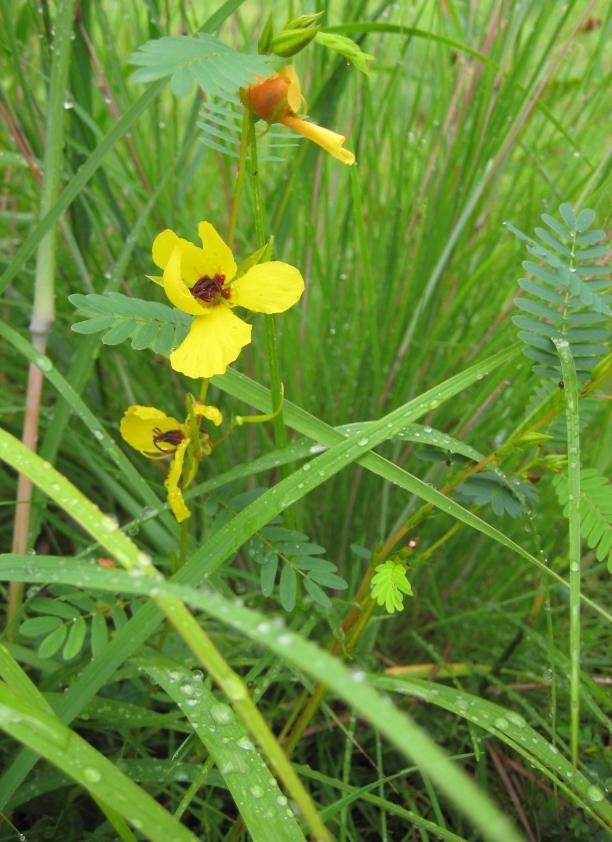
Partridge pea (Chamaecrista fasciculata)
Partridge pea, also known as Sensitive plant, Golden cassia, Locust weed, Sleeping plant
The Partridge Pea (Chamaecrista fasciculata), also called Sleepingplant and Sensitive Plant, is notable for its delicate yellow flowers that close when touched. This annual legume is beneficial for several reasons:
1. **Wildlife Support**: It provides excellent cover for wildlife and serves as a food source for deer and various pollinators, including bees and butterflies.
2. **Soil Health**: As a nitrogen-fixing plant, it enhances soil fertility by converting atmospheric nitrogen into a usable form for other plants.
3. **Erosion Prevention**: Its robust root system helps stabilize soil, effectively preventing erosion.
4. **Inedibility**: While useful in many ways, it is not suitable for consumption by humans or domestic animals.
In addition to these practical uses, the Partridge Pea is appreciated for its resilience, thriving in poor, sandy soils and contributing to the health and stability of various ecosystems.